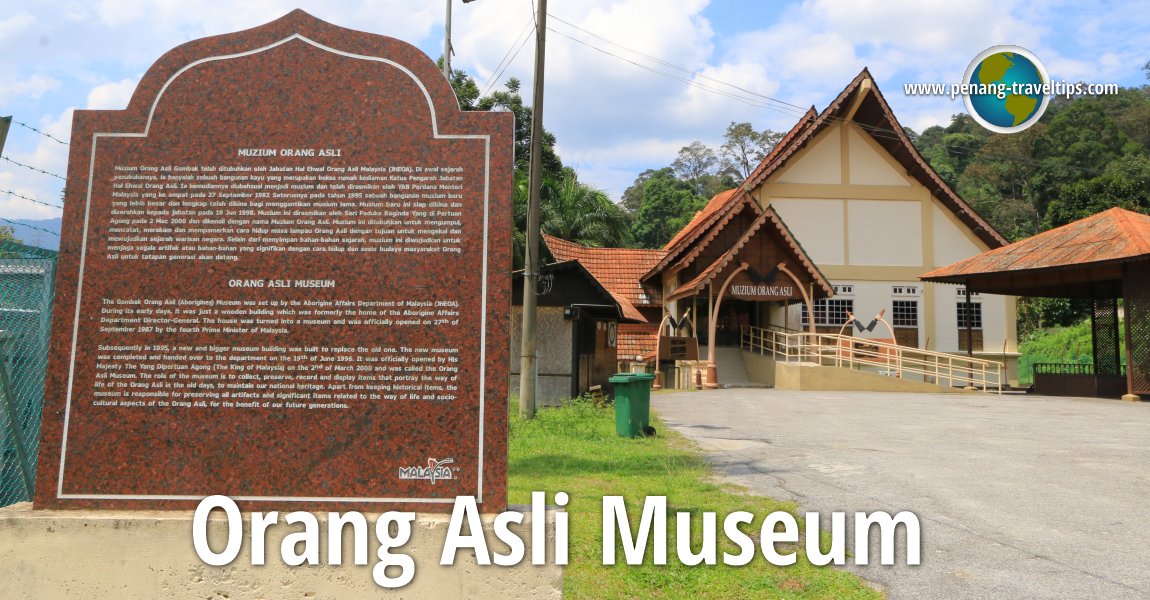 Orang Asli Museum (10 September, 2016)
Orang Asli Museum (10 September, 2016)
B. Melayu
The Orang Asli Museum (GPS: 3.29276, 101.73157) is a museum within the Orang Asli settlement in Gombak, Selangor. It was set up in 1987 by Dr Baharon Azhar, the fourth Director-General of the Department of Orang Asli Affairs (JHEOA) between 1969 to 1986. Dr Baharon had proposed that a museum be set up in the former residence of the Director-General. This led to the opening of the museum by the fourth Prime Minister of Malaysia, Dr Mahathir bin Mohamad, on 29 September, 1987.
Over time, it was deemed necessary for the Orang Asli Museum to have its own building. The Department of Orang Asli Affairs submitted the proposal, which became part of the Sixth Malaysia Plan. Construction began in 1995, and the present museum was built at a cost of RM3.5million. The museum opened to the public on 19 June, 1998, while the official opening ceremony was carried out by the Yang di-Pertuan Agong, Sultan Salahuddin Shah, on 2 March, 2000.
The objective of the Orang Asli Museum is to preserve the history of the Orang Asli community and to showcase the cultural heritage of the community. The museum also functions as a research base on the history and cultural background of the Orang Asli. Among the items displayed at Muzium Orang Asli include hunting weapons, musical instruments, traps, clothing and personal adornment of the Orang Asli.
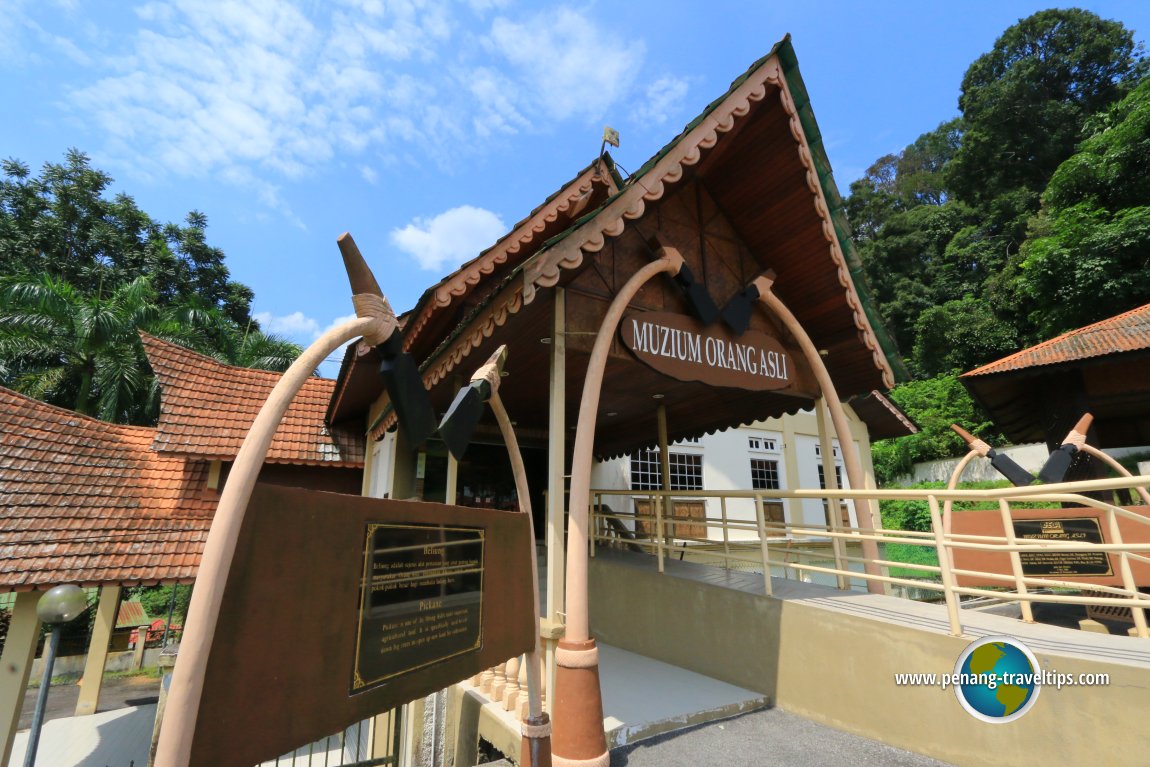 The Orang Asli Museum (10 September, 2016)
The Orang Asli Museum (10 September, 2016)
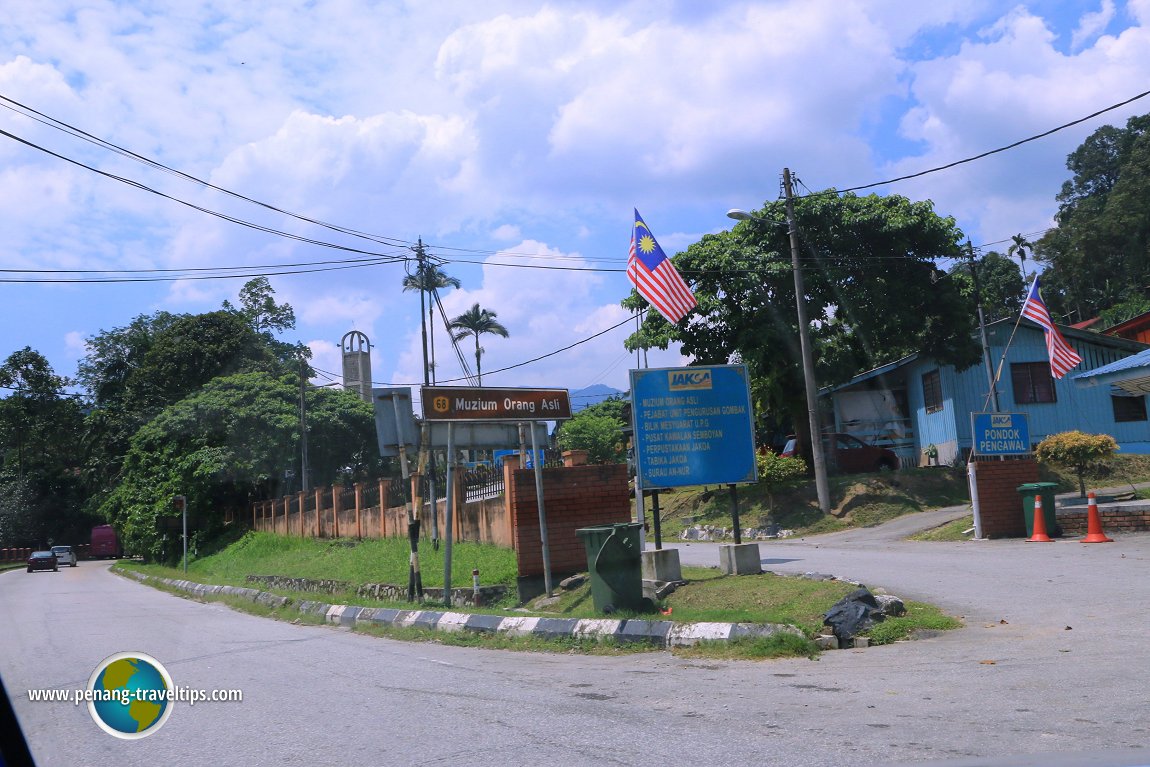 The junction to the Orang Asli Museum (10 September, 2016)
The junction to the Orang Asli Museum (10 September, 2016)
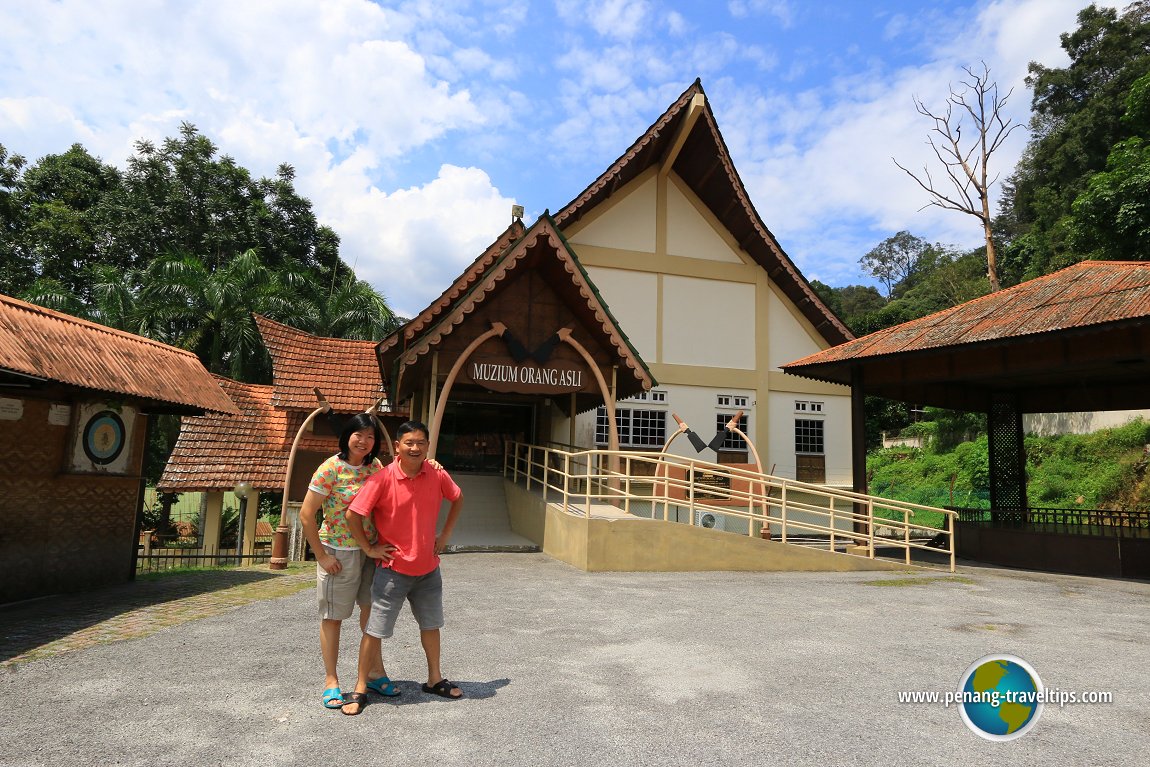 My wife and I at the Orang Asli Museum (10 September, 2016)
My wife and I at the Orang Asli Museum (10 September, 2016)
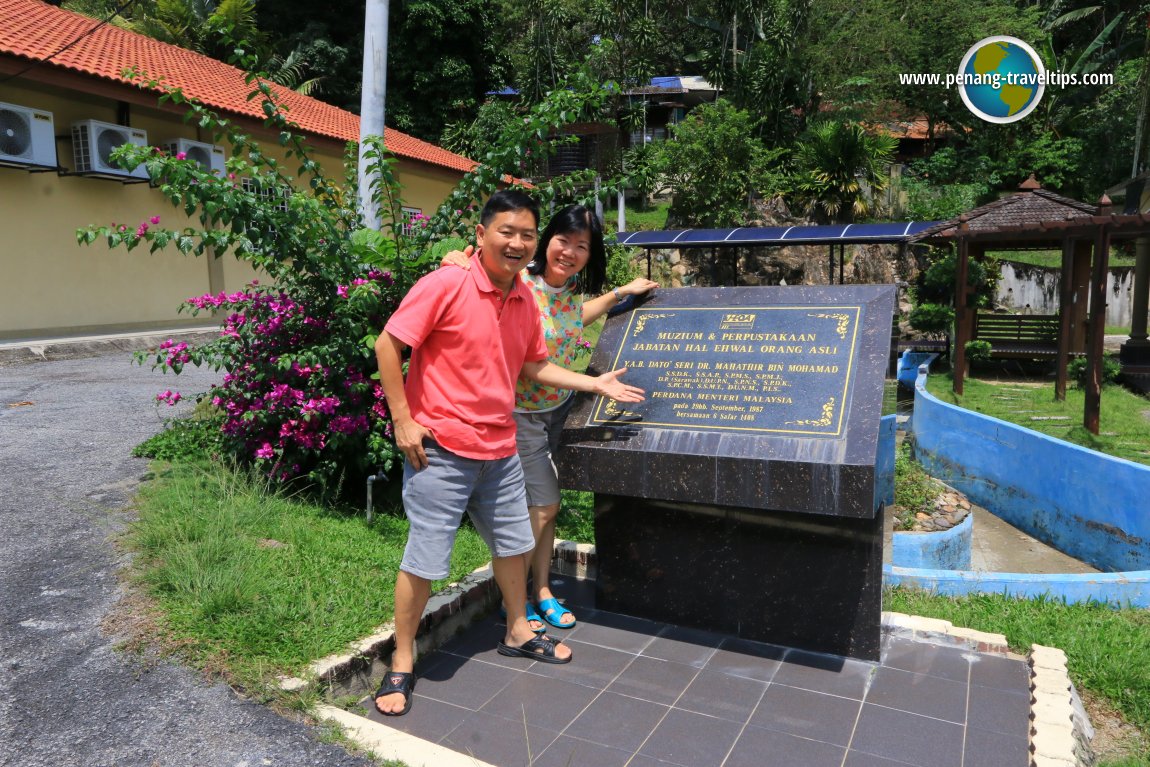 My wife and I with the museum official opening plaque. (10 September, 2016)
My wife and I with the museum official opening plaque. (10 September, 2016)
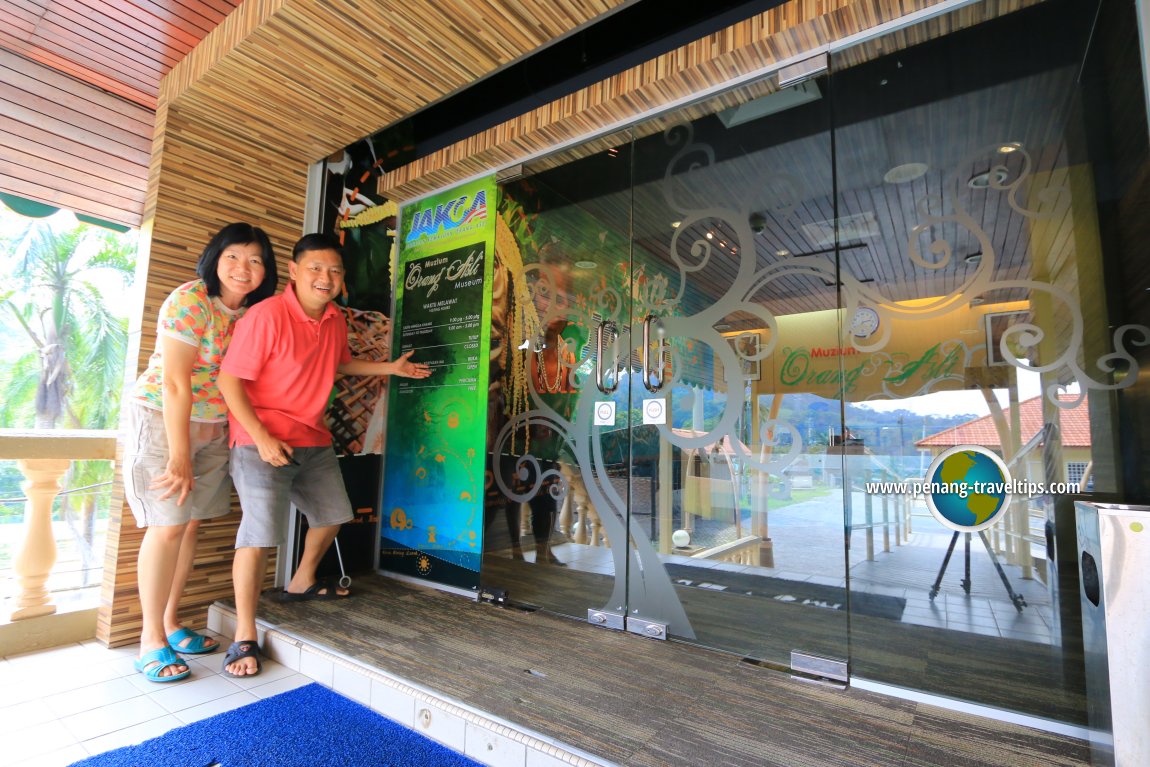 At the entrance to the Orang Asli Museum (10 September, 2016)
At the entrance to the Orang Asli Museum (10 September, 2016)
At the Orang Asli Museum, visitors learn that the Orang Asli of Malaysia is not a homogeneous group, rather, they are a heterogeneous community comprising three major groups, namely the Senoi, Proto-Malay and Negrito. Each major group is further divided into samller subgroups or tribes.
Who is an Orang Asli
According to the Aboriginal Peoples Act 1954 (Act 134) revised 1974, an Orang Asli is any person whose male parent is or was a member of an aboriginal ethnic group, who speaks an aboriginal language and habitually follows an aboriginal way of life and aboriginal customs and beliefs, and includes a descendant through males of such persons. It also includes a person who was adopted when infant by aborigines, who has been brought up as an aborigine, habitually speaks an aboriginal language, habitually follows an aboriginal way of life and aboriginal customs and beliefs and is a member of an aboriginal community. And finally, a child is considered an Orang Asli if he or she is the product of any union between an aboriginal female and a male of another race, provided that the child habitually speaks an aboriginal language, habitually follows an aboriginal way of life and aboriginal customs and beliefs and remains a member of an aboriginal community.The main Orang Asli tribes in Malaysia are the Mendriq, Lanoh, Kensiu, Bateq, Kintaq, Kanaq, Seletar, Temuan, Semelai, Orang Laut, Jahai, Jakun, Jah Hut, Temiar, Mah Meri, Semai, Che Wong and Semoq Beri.
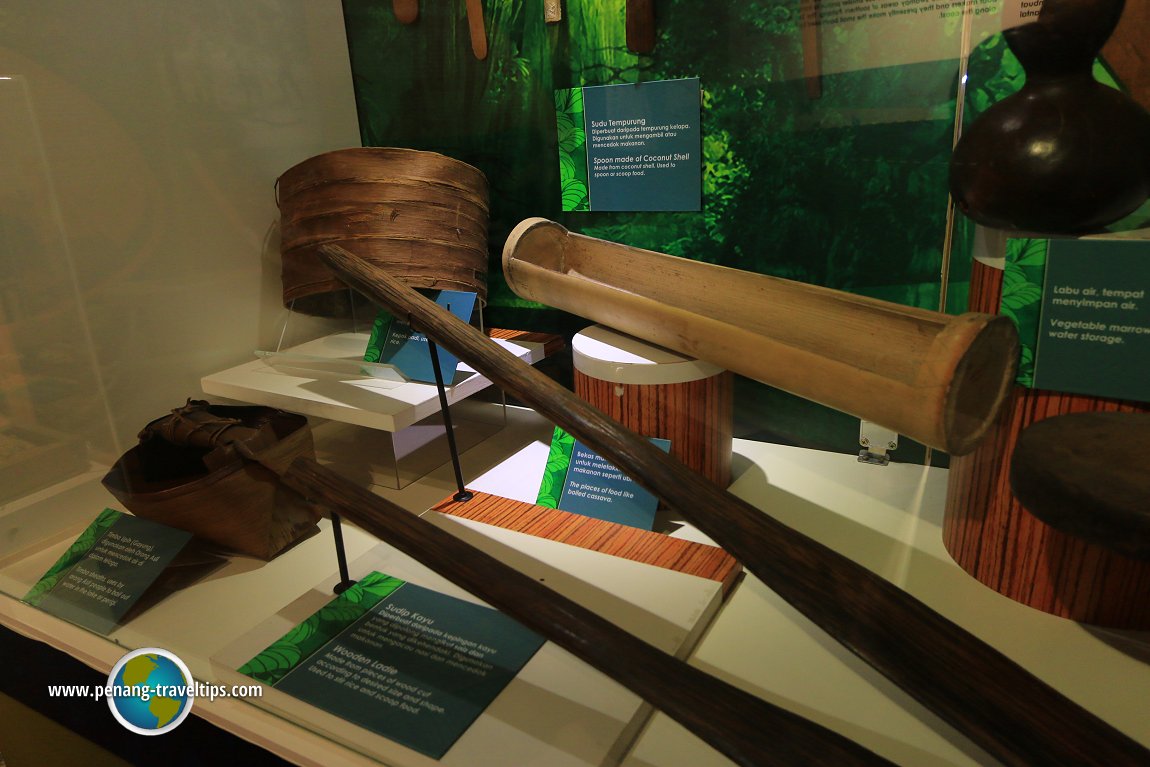 Various implements used by the Orang Asli. (10 September, 2016)
Various implements used by the Orang Asli. (10 September, 2016)
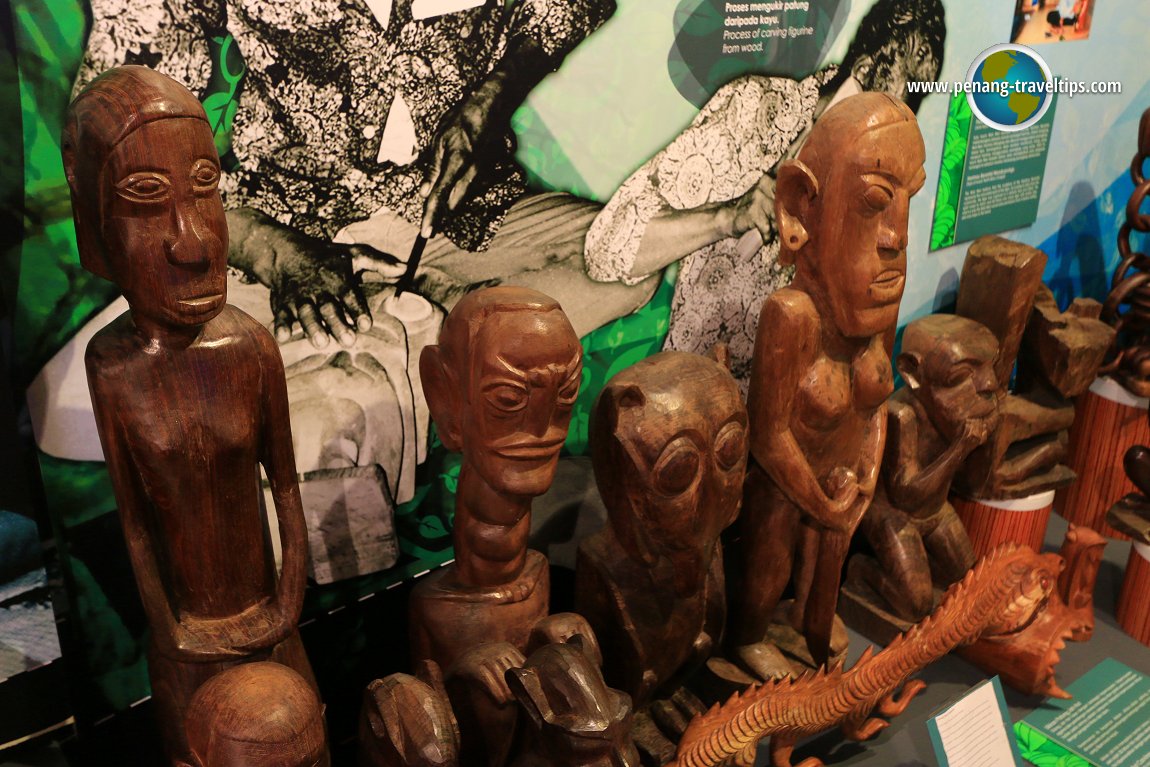 Orang Asli carvings. (10 September, 2016)
Orang Asli carvings. (10 September, 2016)
Domicile of the Orang Asli
It is to be expected that the Orang Asli has various forms of domicile. This can range from simple sheds in the forest to quite elaborate longhouses. The Negritos by and large have the simpler dwellings, being little more than a shed in the forest made of bamboo with roofing of bertam and tepus. On the other hand, the Senois build longhouses which can be 3.5 meters above ground, and housing as many as 120 people. These longhouses stand on pillars made of tree trunks tied using braided bamboo ropes. The Proto-Malays build houses that are closest to the Malays, as they often live close of Malay villages and have absorbed Malay culture.The Orang Asli do engage in some farming. They plant tapioca, upland rice, maize, millet and banana. Land clearing is usually conducted in April to May, when they observe the flowering of forest trees. After felling the trees, they leave them to dry up till July, when they would burn the clearing in time for planting.
The planting of rice and maize is usually done in the months of August and September, when the wet season begins. To get a good yield, the rice and maize seeds are first soaked in the water of shredded galangal and bananas. Both the men and women participate in planting, with the men dibble while the women follow behind to place seeds in the holes. Dibbling is performed according to a pattern, left first then right.
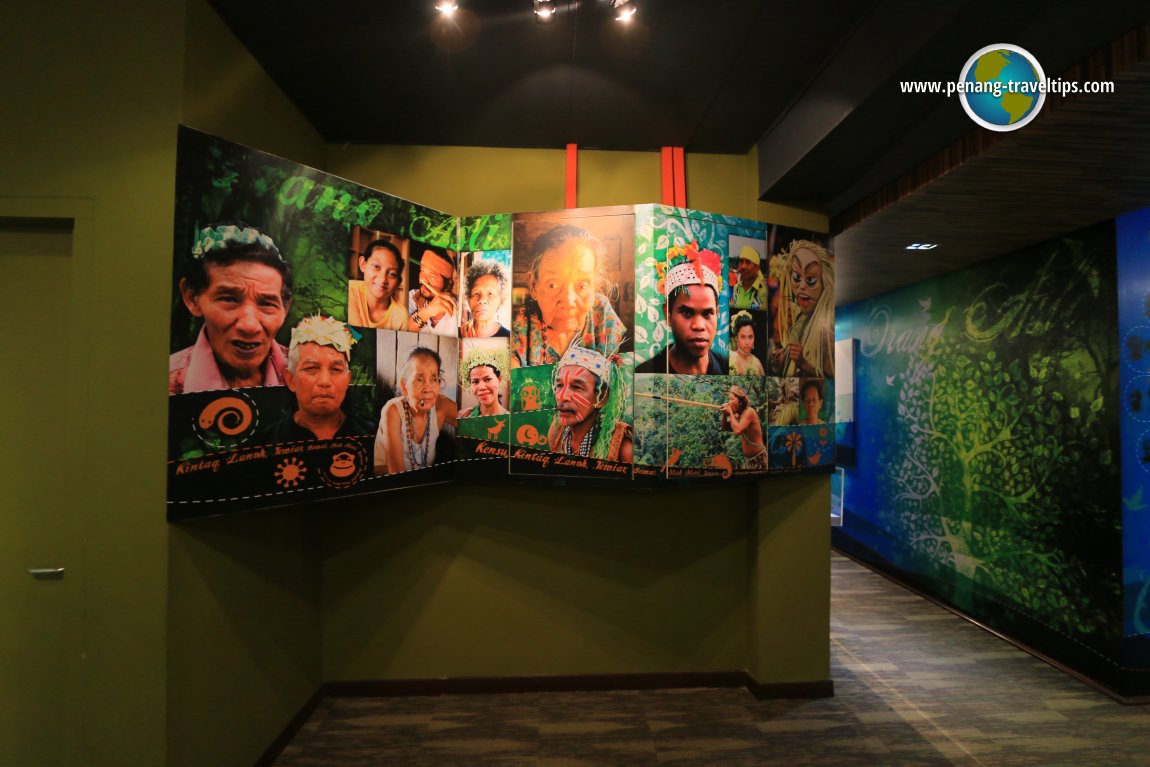 Faces of the Orang Asli of Malaysia. (10 September, 2016)
Faces of the Orang Asli of Malaysia. (10 September, 2016)
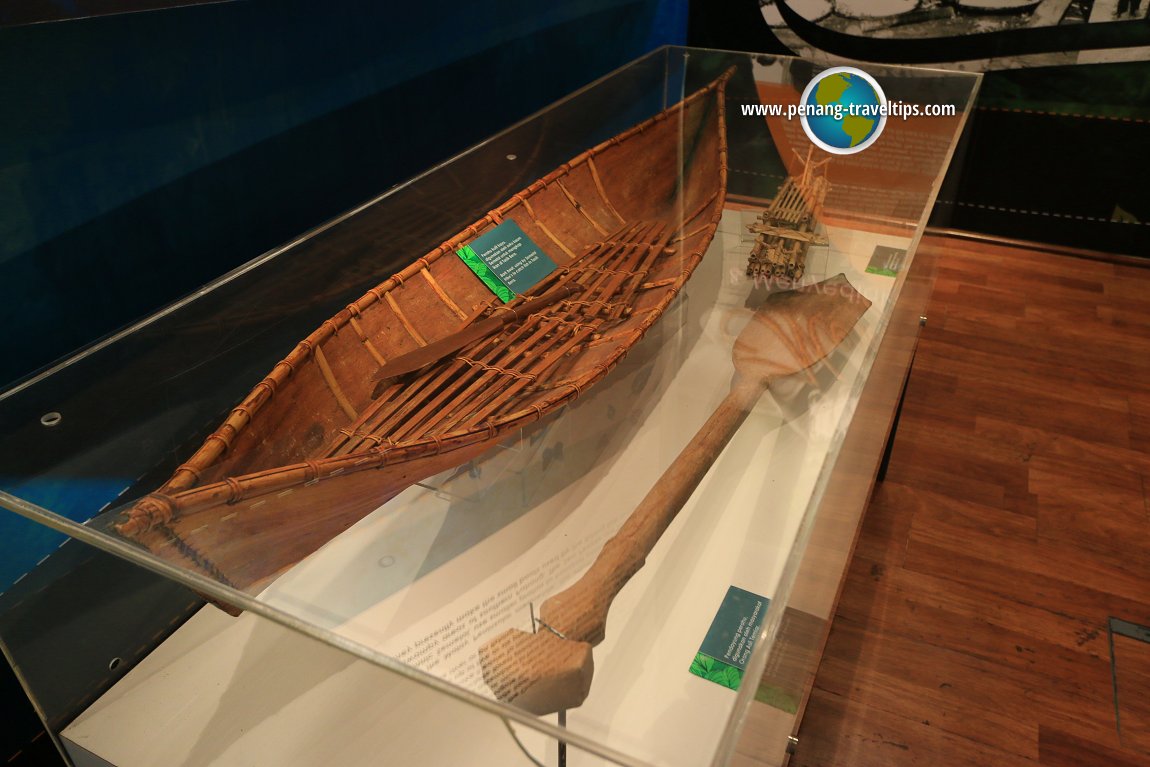 This is a bark boat used by the Semelai tribe to catch fish in Lake Bera. (10 September, 2016)
This is a bark boat used by the Semelai tribe to catch fish in Lake Bera. (10 September, 2016)
The Orang Asli create their own form of music using a variety of musical instruments including the nose and mouth flute, bamboo zither, kereb, centong, gendang and the rebana, among others. Their musical instruments are made using whatever material they could source from the jungle. Music is an important part of their culture, and is a necessity for their celebrations such as harvest festival, weddings and funerals. In the case of funerary rites, the Orang Asli believe that music help usher the soul of the deceased into the afterlife.
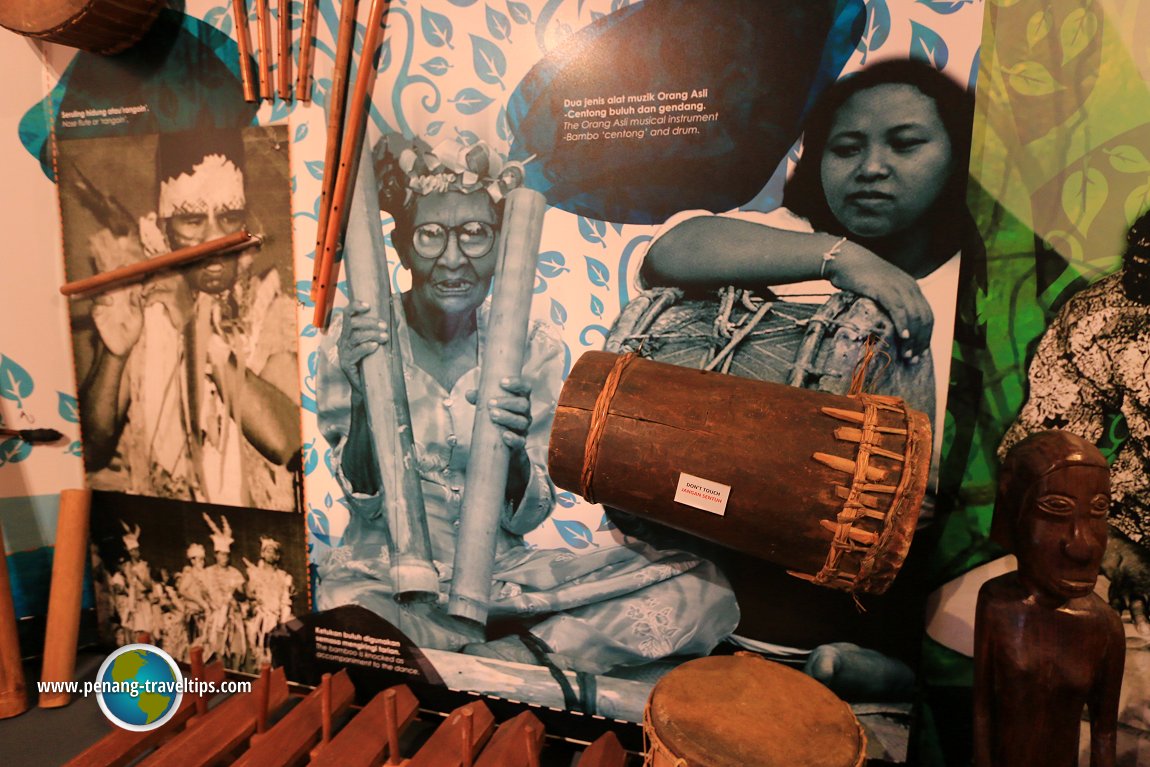 The bamboo centong and the gendang (drum) are two of the musical instruments of the Orang Asli. (10 September, 2016)
The bamboo centong and the gendang (drum) are two of the musical instruments of the Orang Asli. (10 September, 2016)
Whenever there is a death in the community, the first thing is for the Batin or headman to confirm the death. The Batin then appoints a Jurukerah, or village informer, to make preparation for the funeral. Everybody is expected to defer all daily activities, to avoid displeasing the spirit of the deceased, which may retaliate by casting misfortune.
Burial is usually not carried out on the same day as the death, in order that members living afar have a chance to pay their last respects. Children have their ears smeared with blessed lime paste, as a spiritual protection for them. There would be a wake for the deceased. During this time, the spouse and immediate family members of the deceased are forbidden from wearing any form of makeup or adornment. The mourning period is usually forty days, during which time they were not allowed to participate in any form of celebrations.
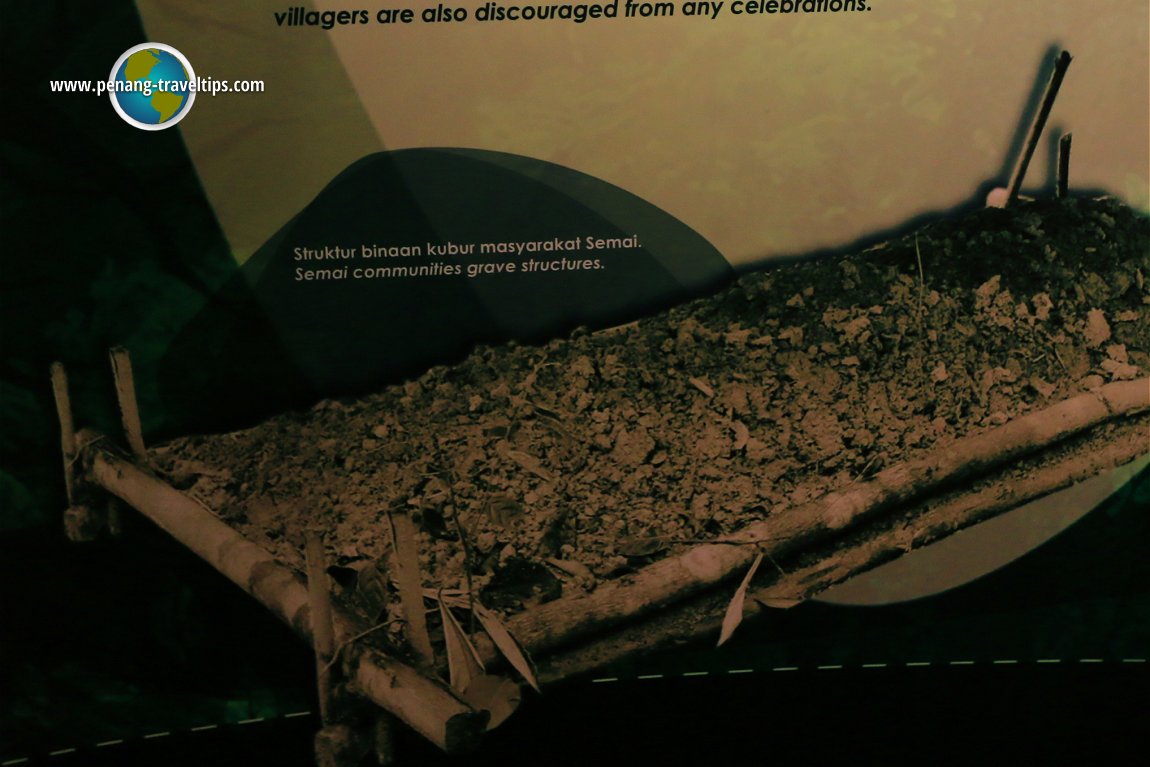 The grave structure of the Semai people. (10 September, 2016)
The grave structure of the Semai people. (10 September, 2016)
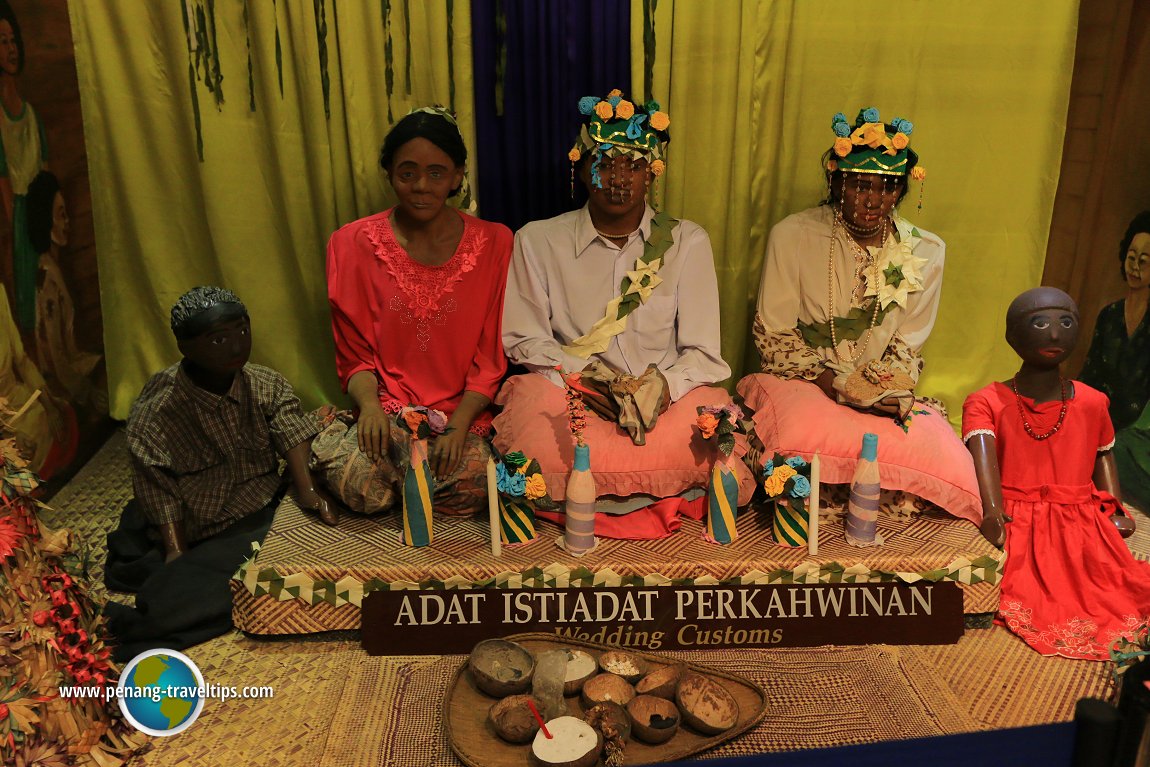 An Orang Asli wedding mock up. (10 September, 2016)
An Orang Asli wedding mock up. (10 September, 2016)
Turn right at this junction from Jalan Gombak to reach the Orang Asli Museum.
Contact
Muzium Orang AsliJabatan Hal Ehwal Orang Asli
Km24 Jalan Pahang, Gombak 53100 Selangor.
Opening Hours:
Saturdays to Thursdays: 9:00 am to 5:00 pm
Fridays closed
Admission is free
The Orang Asli Museum is  on the map of Tourist Attractions of Selangor
on the map of Tourist Attractions of Selangor
How to go to the Orang Asli Museum
From Kuala Lumpur, take Jalan Pahang going north until you reach the interchange for Jalan Gombak. This is how the junction looks like (street view below). Drive for another 14 km and you will arrive at Muzium Orang Asli on your right.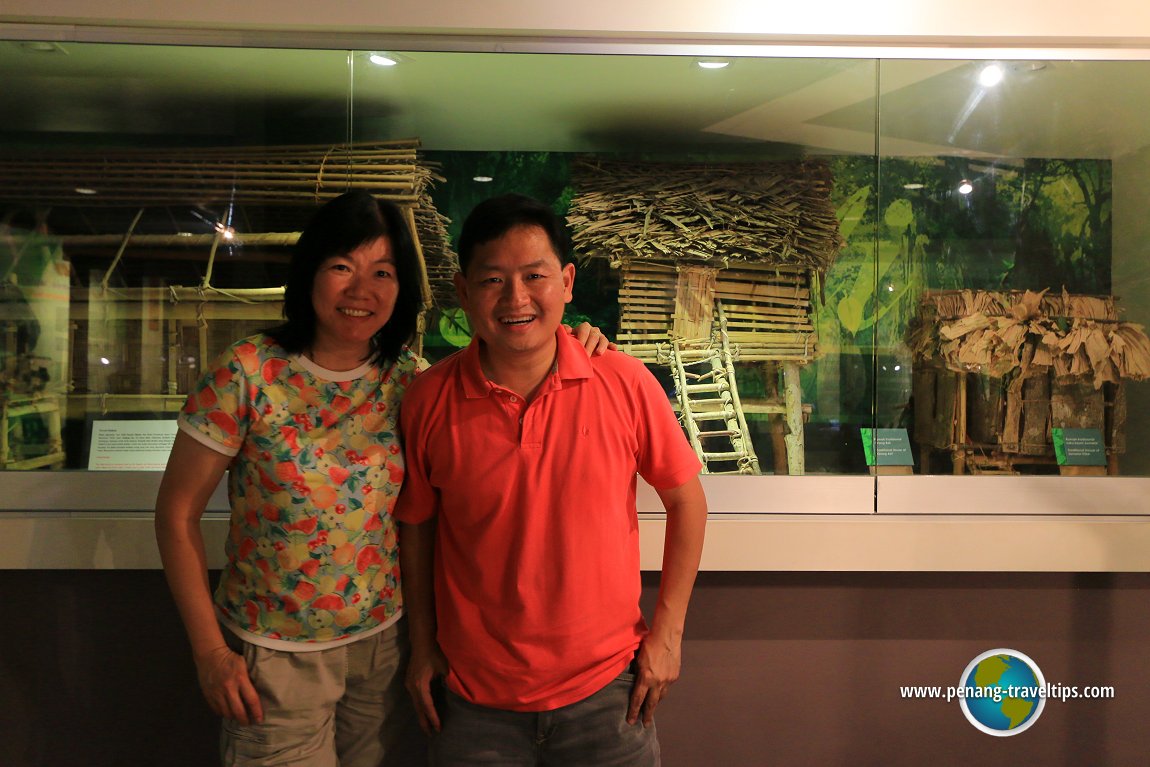 My wife and I at the Orang Asli Museum. (10 September, 2016)
My wife and I at the Orang Asli Museum. (10 September, 2016)
[an error occurred while processing this directive]
10 Top Tourist Attractions in Selangor
Planning a visit to Selangor soon? Here's my recommendation of 10 top tourist attractions for you to consider.Details
Back to Discover Selangor; list of Museums in Selangor and Museums in Malaysia
 Latest updates on Penang Travel Tips
Latest updates on Penang Travel Tips

Copyright © 2003-2025 Timothy Tye. All Rights Reserved.

 Go Back
Go Back